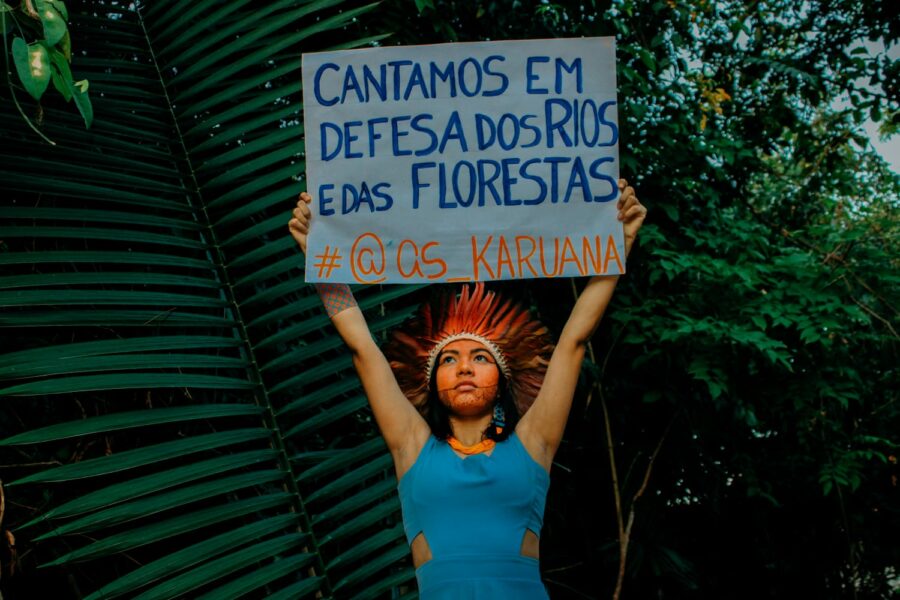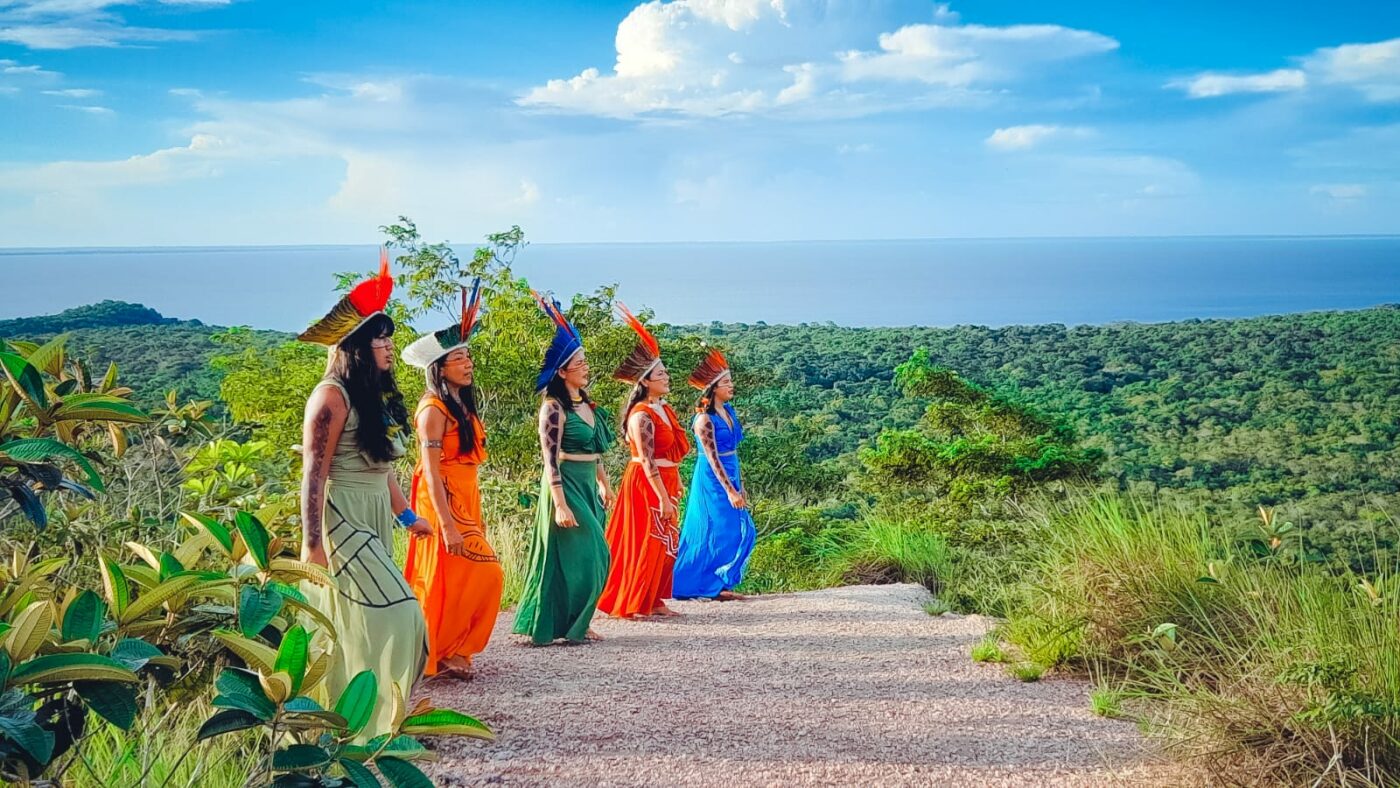
We’re proud to announce the 2022 NATV Award winner
As Karuana, a female collective who through music and the arts, share their voices with the world. They fight in defence of their territories and in communion with the spiritual world, where they echo the voices of their ancestors and the enchanted one. Based in Borari territory (Alter do Chão, Brasil) they bring the message of maintaining forests, rivers, lakes and streams for the well-being of the humanity.
In Conversation With…
“As Karuana” in the Tupí language refers to the spirits of forests and waters, what special or meaningful memories do you have of the land? Why is the Tapajós River so important to you?
With this reference, in our belief the Karuana are the protective spirits of rivers and forests, making these sacred places their abode and thus helping to protect these places, because everything we need to live comes from rivers and forests, food, healing by plants, our art, all our good living comes from a good relationship with Mother Earth. So we grew up hearing our parents say that “when entering the forest or rivers, we have to ask permission.” a teaching of respect for nature.
Jumping or bathing in the river in front of the house without fear is the most beautiful memory, today our waters are no longer so pure.
Our main source of food is still fish, the entire connection between peoples in the Amazon is made through Rio, our spiritual strength is also in the river, Rio is everything to us!
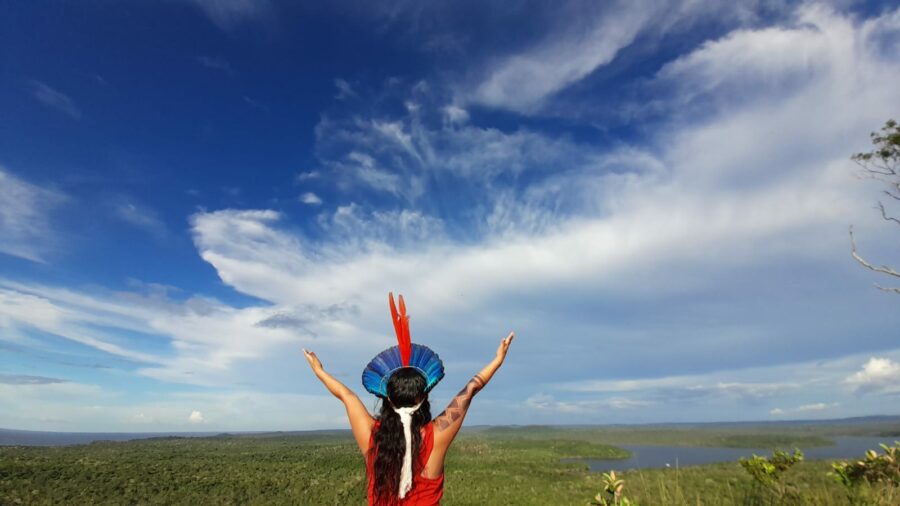
Why do you pursue music as a creative art form? Where does your passion for music come from (if any of your parents, friends or older musicians)?
As a child or teenager we always participated in the old and traditional dances of our community and I noticed that the songs always spoke of a story related to our experiences, that’s when I started the composition based on the stories my mother told. There was also a person from the community, now deceased, who helped me with the melodies. Today I compose lyrics and music. Music is a powerful art that touches everyone.
Can you talk about the formation of As Karuana, why become a musical group? In what year did the collective officially form? How does everyone in the matriarchal clan know each other? Where does everyone in the group live?
The group As Karuana was formed in 2019, the year Brazil changed its president and that our reality from then on was going to be very difficult in the political context and at a time when women increasingly assume the front line in defense of their rights. territories and in the face of a great setback of rights already conquered. Some of us were already familiar with these movements. So I had the idea of using activism through music, what we call artivism to always be represented, speaking through music of our culture, experiences, forests and rivers, our ancestry on which the compositions of our songs are based to make echo our voices occupying other spaces of speech. We are from different ethnic groups from the Baixo Tapajós region in the west of Pará / Amazon / Brazil.
What are the inspirations behind As Karuana? Are there other musical groups, indigenous cultures or stories that led the group to start creating music? Who inspires or influences you as artists and why?
I already made compositions when in our old dances and songs were made for our days of traditional celebrations. Over time, something was lost. Currently women assume the front line in the defence of culture.
Faced with the invasion and destruction of forests, there was a need to strengthen and advance the voice of women to defend their territories. So I had the idea to form the group of all indigenous women, which was also inspired by the group of women from here in the state of Pará called Sereias do Mar, a group of only women.
Do the women in the group have experience or professional training in music? How was the music practice to start recording an album? What kind of live performances were done?
In the beginning, everyone already knew how to play the instruments – maracas and curimbós – because of our indigenous rituals. And over time we had many professional friends in music who at some point helped us to improve with the introduction of new instruments, such as the banjo.
When it came time to record our first album, there were already compositions written by me in which I only had to introduce a few rhythms. We met frequently to rehearse, we had the support of a percussionist musician, only then after that we went to the studio to record. At the time of a pandemic, it was very difficult to be all together, but we managed to accomplish everything on time with the Public Notice in which we were being supported.
The performances were few due to the pandemic, but we participated in some social movements events anc another national one, as was the participation in the Indigenous Women’s March in Brasília
Can you describe the process of creating your 2021 album Vozes Dos Rios e Florestas? Where did you record? What are the themes of the album? How long did the process of composing and creating the instrumental sound take?
When we decided to record an album, we had already recorded two songs for an EP independently without any money support that because of the pandemic was not released. With approval in an Edict also because of the pandemic, we had to do it within nine months, then I ran to define the melodies of the compositions that talk about ancestry, forests, rivers and our beliefs. We didn’t have much time to rehearse with the worsening of the pandemic it was very difficult to meet, it was a great challenge and also a joy to think that we were recording a collective album. So, we had the help of a percussionist to go to the studio to record the percussion of the 5 songs and four of the group Nilma Tapajó in the main voice, Nilda Borari in the main voice, Viviane Borari Borari and I put the voice. We recorded in a small studio in Santarém do Pará. Within one, the process of composing and creating the instrumental sound was created, on average within nine months.
What were the goals you wanted to achieve with the album? Who is your target audience? What messages do you want to say to a global audience?
Bringing the culture of indigenous peoples to the general public through music, raising awareness of the preservation of forests and rivers. To take the role of women in the defense of the good life of their territories and maintenance of the culture of their people, in addition to occupying different spaces.
The message is that “preservation is protection of the Amazon and important not only for indigenous people but also for non-indigenous people”.
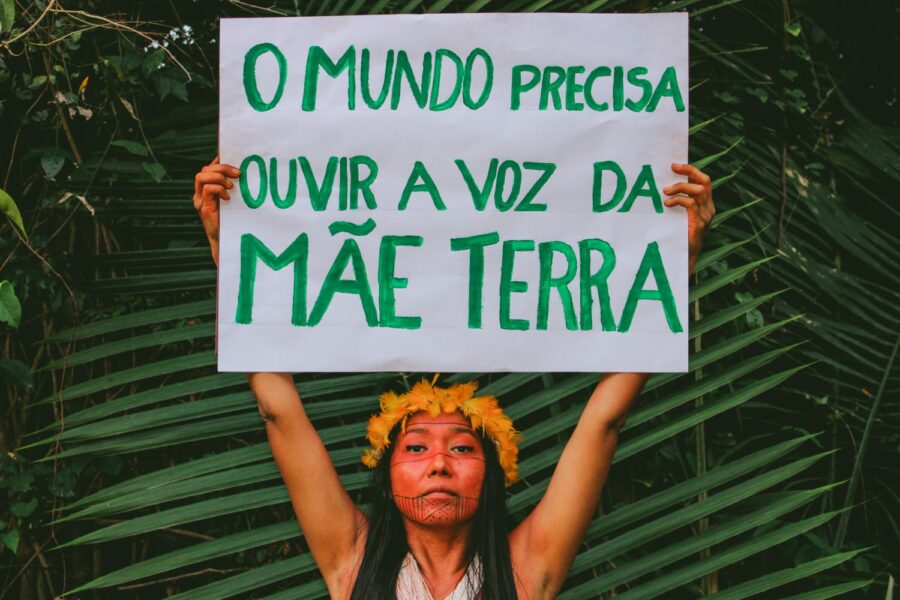
What language is spoken with the music of As Karuana? When not recording music, what language do you speak with the other members of the matriarchal clan?
The colonization here was overwhelming, we speak Portuguese mixed with Nheengatu, the local indigenous language, our language has not died as they say. Our great-grandparents still spoke the native language fluently. In our group, one of our vocalists speaks Nhengatu and is a language teacher at school in a process of the movement to rescue our language. In our album, we thought not only to put Portuguese but also a little Nhengatu as you can see,
Are you looking for other creative arts, like making clay or body painting? Can you describe the cultural significance and rituals of practicing these art forms?
We can say that in our culture, what we call the process of spiritual healing for ills, is loaded with the representation of elements that are related to everything that comes from the forest, ceramics are of great significance, expressing a whole history and ways of life of several generations of our ancestors. The paintings have different meanings among different peoples, there are different paintings at different times and times. For us we have the painting of the tortoise symbol, which means strength, courage and resistance, and the snake that means protection.
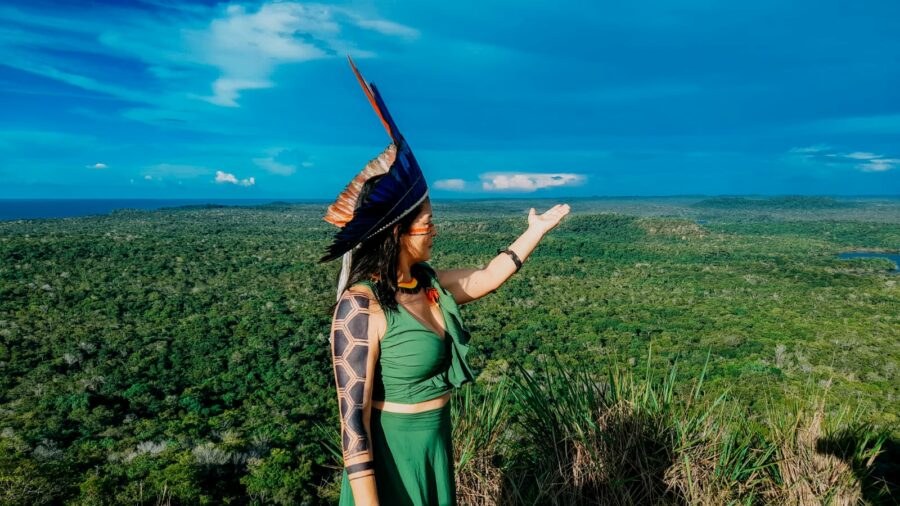
Can you describe the creation of the Borari Kitiwara video? How much planning and preparation did this take? How long did it take to create? What were the challenges of filming in Alter do Chão?
To produce the kitiwara video, we were selected in a Public Notice to record the video and the album, we had eight months to complete everything. We thought of putting a little of the cultural representation of our day, and a little of our activism or artivism for the defense of our forests the importance they have for us. The biggest challenges were the fact that when we had to record it was the rainy season here in the Amazon in addition to the rules of distance allowed.
The Karuana is formed by indigenous women from Borari, Kumaruara, Tapajó and Tupinambá. What similarities do you all share between beliefs, customs and rituals?
Although we are of different ethnicities, our beliefs and customs and rituals are relationships with rivers and forests.
Did anyone from the group participate in the Free Land Camp this year? Can you tell me about the importance of this movement?
Two of the group participated in Acampamento Terra Livre, , a political movement of greater importance and visibility of the struggles of indigenous peoples in Brazil in defense of their rights that already exist in the Brazilian constitution, but which are not respected.
How do you feel about the mining and deforestation (legal and illegal) that is taking place in Brazil right now? How devastating is the impact to the earth?
Mining projects are devastating to the lives of traditional peoples, with these projects coming drugs, prostitution, devastation of forests, pollution of rivers and diseases, murder of indigenous and non-indigenous leaders who fight for life in the forest. They are death projects for indigenous peoples.
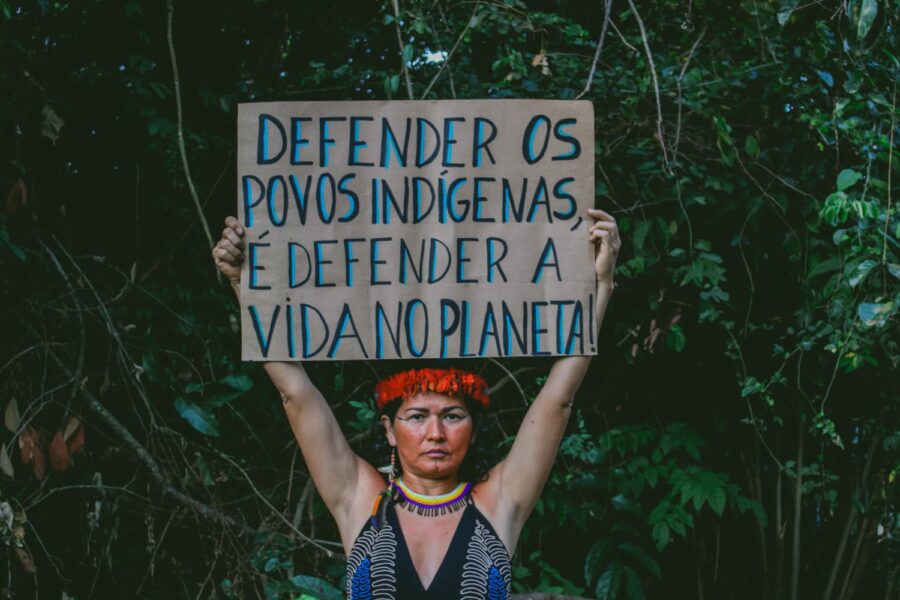
With the disappearance and murder of Bruno Pereira in June, and more than 182 indigenous people murdered in 2020 in connection with protecting indigenous land, what can we do to help protect this land and support indigenous peoples?
I believe that social media are great allies in defending forests and the lives of forest peoples. In principle, it is very important to publicize the struggle of peoples, the government’s neglect, impunity in the face of the deaths of Amazon defenders and, especially, the culture of indigenous peoples so that the world becomes aware of the importance of forests and indigenous lives and also non-indigenous.
Follow As Karuana on Instagram
